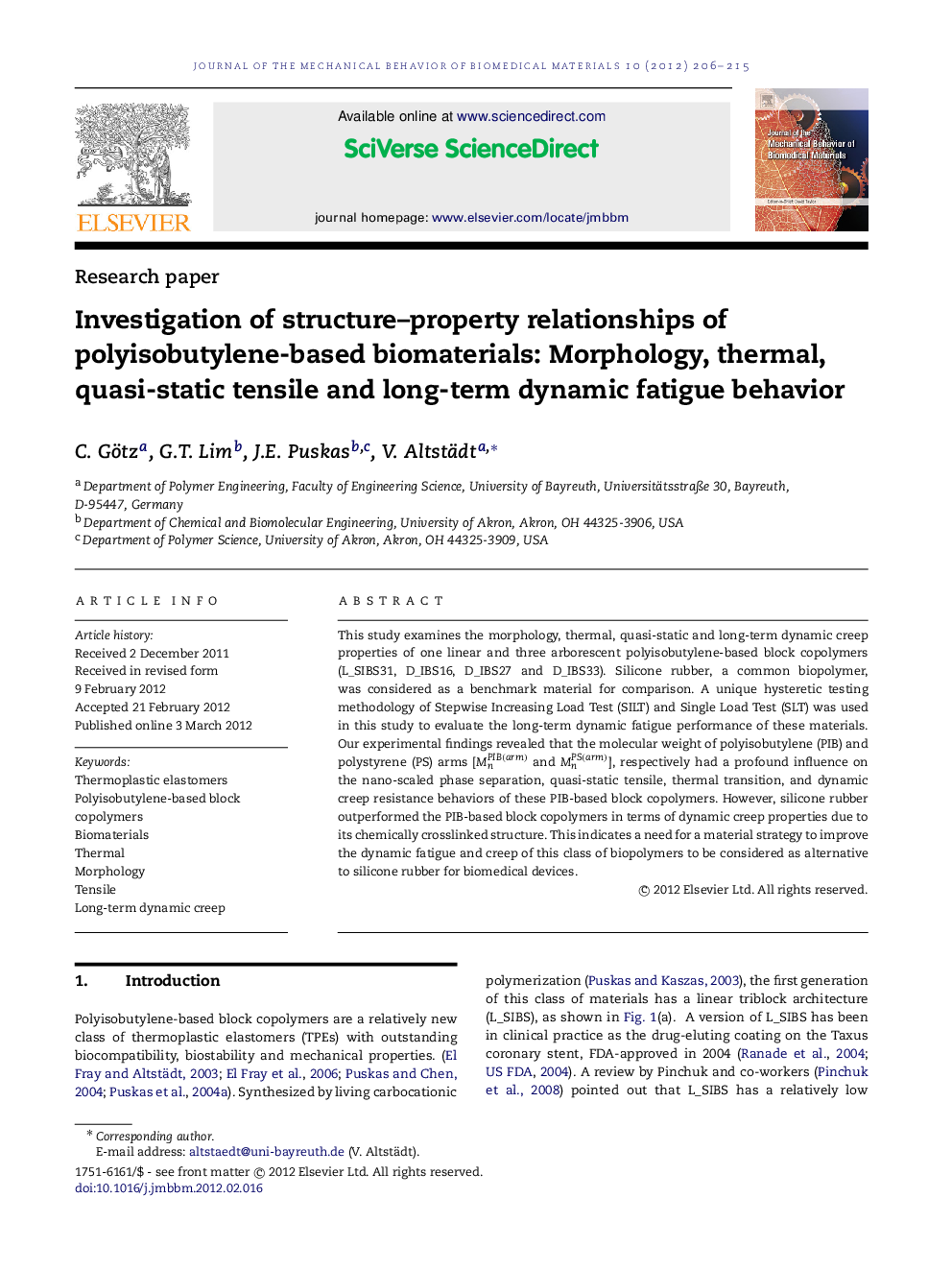| کد مقاله | کد نشریه | سال انتشار | مقاله انگلیسی | نسخه تمام متن |
|---|---|---|---|---|
| 811060 | 1469135 | 2012 | 10 صفحه PDF | دانلود رایگان |

This study examines the morphology, thermal, quasi-static and long-term dynamic creep properties of one linear and three arborescent polyisobutylene-based block copolymers (L_SIBS31, D_IBS16, D_IBS27 and D_IBS33). Silicone rubber, a common biopolymer, was considered as a benchmark material for comparison. A unique hysteretic testing methodology of Stepwise Increasing Load Test (SILT) and Single Load Test (SLT) was used in this study to evaluate the long-term dynamic fatigue performance of these materials. Our experimental findings revealed that the molecular weight of polyisobutylene (PIB) and polystyrene (PS) arms [MnPIB(arm) and MnPS(arm)], respectively had a profound influence on the nano-scaled phase separation, quasi-static tensile, thermal transition, and dynamic creep resistance behaviors of these PIB-based block copolymers. However, silicone rubber outperformed the PIB-based block copolymers in terms of dynamic creep properties due to its chemically crosslinked structure. This indicates a need for a material strategy to improve the dynamic fatigue and creep of this class of biopolymers to be considered as alternative to silicone rubber for biomedical devices.
Figure optionsDownload high-quality image (216 K)Download as PowerPoint slide
Journal: Journal of the Mechanical Behavior of Biomedical Materials - Volume 10, June 2012, Pages 206–215